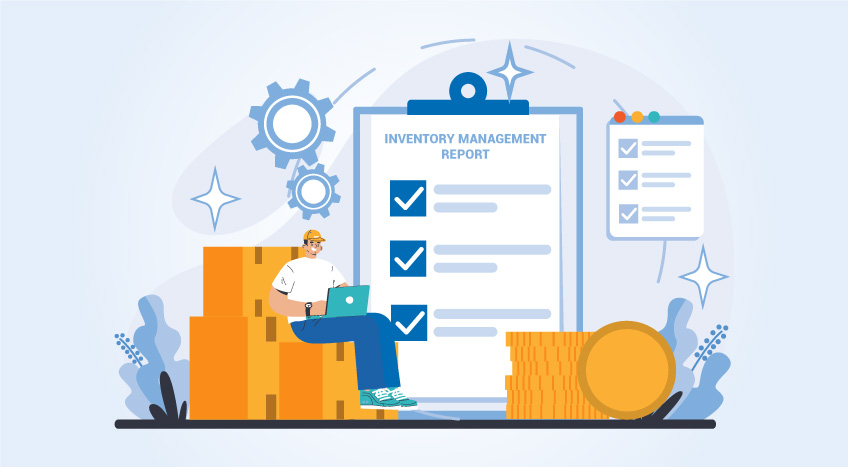- What is NOPAT?
- How Is NOPAT calculated in the USA?
- NOPAT examples
- Are NOPAT and EBIT the same?
- Advantages and disadvantages of NOPAT
- Why you cannot do without business management software
What is NOPAT?
NOPAT or Net Operating Profit After Tax is a measure of business profitability after tax. NOPAT is oftentimes used to compare businesses in the same industry and evaluate how a business is doing presently compared to its past performance. NOPAT paints a clearer picture of profits if the business had no debts, no interest expense, and no non-operating income taxes. That is, it doesn’t take these three aspects into account. NOPAT is important because sometimes financial statements cannot give an accurate overview of the financial health of a business. It is difficult to determine whether a business is making a profit and has the potential to do so or not. The NOPAT formula allows key people in a business to determine profitability.
The people who benefit the most from NOPAT calculations are executives, moneylenders, investors, and shareholders. NOPAT is used by executives who make key business decisions as it enables executives to make decisions regarding product pricing or whether additional investment needs to be made. Moneylenders can benefit from NOPAT value as they can determine which businesses are capable of paying back loans and so lend to businesses accordingly. NOPAT allows moneylenders to determine the amount they can safely lend to different businesses. NOPAT is used by shareholders and investors to make investment-related decisions.
| Real Estate Accounting in US Best Practices and Bonus Tips |
How Is NOPAT calculated in the USA?
There are two ways to calculate NOPAT in the USA. The first formula is a simpler version and provides a NOPAT estimate while the second formula is more complex and is more accurate in comparison.
NOPAT formula 1
The first NOPAT formula that is used by businesses is as follows.
NOPAT = Operating income x (1 – tax rate)
This NOPAT formula is used when you are aware of your operating income and the tax rate. The operating income of a business is calculated by subtracting gross profit from operating expenses. The tax rate is the percentage of tax paid by the business.
NOPAT formula 2
The second NOPAT formula used by businesses is as follows. This formula is used when you aren’t aware of how much your business earned before tax deductions and interest expenses.
NOPAT = (Net income + non-operating income loss – non-operating income gain + interest expense + tax expense) x (1 – tax rate)
To calculate NOPAT with this NOPAT formula, you need to first calculate your net income. Net income is calculated by subtracting operating costs from total revenue. Second, calculate the non-operating income loss which includes losses such as selling defective products at a lower price among others. The non-operating income gains need to be calculated next. Non-operating income gain is how much your business earns from non-operating related activities such as investment. Next, the interest expense is calculated. You get this value by subtracting profit before tax from net profit. The tax expense is calculated by multiplying profit before tax and the tax rate.
NOPAT examples
Let us say you have an operating income of $200,000 and a tax rate of 40%. Using the simpler NOPAT formula where NOPAT = Operating income x (1 – tax rate), NOPAT will be $200,000 X (1 – 0.4) which is $120,000. Hence, NOPAT is $120,000.
The use of the second more complex NOPAT formula where NOPAT = (Net income + non-operating income loss – non-operating income gain + interest expense + tax expense) x (1 – tax rate) can be better understood as follows.
|
Net income |
$150,000 |
|
Cost of goods |
$40,000 |
|
Labor costs |
$20,000 |
|
Administrative costs |
$15,000 |
|
Total net profit |
$75,000 |
|
Interest expense |
$15,000 |
|
Profit before tax |
$60,000 |
|
Tax rate |
30% |
|
Tax expense |
$18,000 |
|
NOPAT |
$127,400 |
From the table, NOPAT was calculated as follows:
NOPAT = ($150,000 + $1000 – $2000 + $15,000 + $18,000) x (1 – 0.3)
NOPAT = $127,400
Are NOPAT and EBIT the same?
NOPAT and EBIT are distinct although they are often confused for one another by many business owners. EBIT and NOPAT are used to easily compare two or more businesses that operate in the same industry. EBIT stands for earnings before interest and taxes. EBIT is calculated by subtracting operating expenses from revenue and adding non-operating income. It doesn’t take tax rates and interest expenses into account. NOPAT and EBIT are different because NOPAT throws light on the operating profits after taxes while EBIT shows how much your business is making minus the interest expenses and taxes.
Advantages and disadvantages of NOPAT
NOPAT Advantages
The NOPAT formula gives a crystal-clear view of the cash flow of a business because it is calculated based on real values derived from your financial transactions such as net income, non-operating gains, non-operating losses, and tax rate. This enables NOPAT to give you an accurate value that can be measured which makes comparison with competitors effortless, quick, and simple. With other financial metrics, the comparison isn’t that simple and accurate.
NOPAT can better showcase the performance and operations of a business when compared to calculating the net income of a business after the addition of tax. This is because NOPAT doesn’t take into account the debt which can lead to high-interest costs. NOPAT unveils the operational efficiency of a business which is sometimes not clear when only the net income is being considered to analyze a business.
NOPAT Disadvantages
The NOPAT formula compares businesses that are from the same industry but it does not take into account the different growth stages that those businesses may be at. The varying growth stages can have an impact on the business and its operations. As NOPAT doesn’t consider it in its calculations, it means NOPAT isn’t perfectly accurate for comparison purposes even if the businesses being compared operate in the same industry.
In some businesses, the treasury staff might have done something that has impacted the capital structure of a business. As NOPAT doesn’t consider this aspect, it doesn’t fully uncover the potential of a business. This is particularly true for businesses that might have made changes that can eventually lead to better cash flow and which are different from those employed by the competitor of that business.
NOPAT vs. NOPLAT: What's the difference?
NOPAT and NOPLAT are often used interchangeably but they have a key difference that separates them both. NOPAT stands for net operating profit after tax and it looks at the profitability of the core operations of a business. NOPAT excludes taking into account the tax savings of a business due to debts. NOPLAT stands for net operating profit less adjusted taxes and is similar to NOPAT as it focuses on the core operations profitability of a business too. However, NOPLAT also includes the deferred tax changes in its calculation along with the rest of what NOPAT includes.
This means NOPLAT is the same as NOPAT but with the inclusion of deferred taxes. NOPAT and NOPLAT are both used by analysts of mergers and acquisitions to take a thorough look at a business and its core operations. NOPAT is used to calculate free cash flow to firms or FCFF and economic free cash flow to firms. NOPLAT formula also has several applications such as use in leveraged buyout or LBO models, and discounted cash flow or DCF models. It is also used in the calculation of free cash flow or FCF. NOPAT and NOPLAT aren’t the only financial metrics used by key decision-makers as other business aspects are taken into account as well.
Why you cannot do without business management software
A business management software solution such as TallyPrime is an integral part of the business. TallyPrime drills down to the deepest aspects of your business so you can get a complete view of how your business is operating. Its automation and reporting features enable your business to make sense of the data. For example, a ratio analysis report provides information about ROI. TallyPrime is a complete solution that enables you to record every transaction about your business and derive a wealth of meaning from it so better decisions can be made.
Explore more Products
Best Accounting Software in USA, Accounting Software for Small Businesses in USA, Factors to Consider before Buying Bookkeeping Software in USA, Benefits of Payroll Management Software for Small Businesses in USA, Invoicing & Billing Software in USA That Best Suits Your Business
Read more on Accounting
COGS vs Expenses, What is Revenue Recognition?, Financial Accounting Vs. Managerial Accounting, Real Estate Accounting in US Best Practices and Bonus Tips, Difference Between an Estimate, Quote, Bid, and Proposal, How to Easily Build Great Estimates for Your Projects?
Popular Articles
Differences Between Trial Balance & Balance Sheet, What is A Pay Stub?, What Are T Accounts?, What is a credit note?, How to Find Gross Profit?, What are Operating Expenses?, Break Even Point Formula, What is the Gross Margin Formula?, What is the Direct Write Off Method?, What Is Interest Expense?










